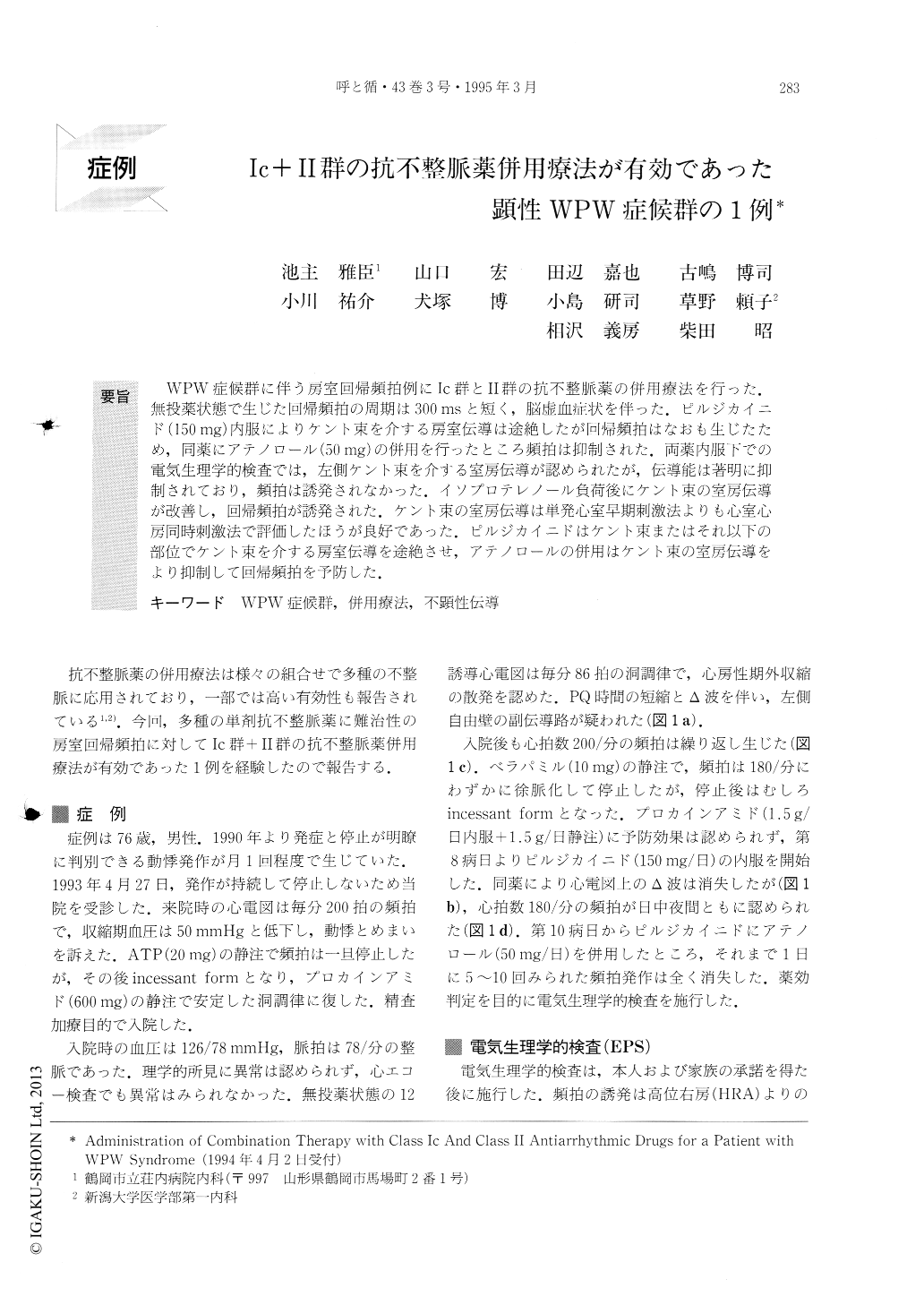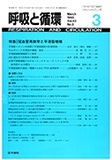Japanese
English
- 有料閲覧
- Abstract 文献概要
- 1ページ目 Look Inside
WPW症候群に伴う房室回帰頻拍例にIc群とII群の抗不整脈薬の併用療法を行った.無投薬状態で生じた回帰頻拍の周期は300msと短く,脳虚血症状を伴った.ピルジカイニド(150mg)内服によりケント束を介する房室伝導は途絶したが回帰頻拍はなおも生じたため,同薬にアテノロール(50mg)の併用を行ったところ頻拍は抑制された.両薬内服下での電気生理学的検査では,左側ケント束を介する室房伝導が認められたが,伝導能は著明に抑制されており,頻拍は誘発されなかった.イソプロテレノール負荷後にケント束の室房伝導が改善し,回帰頻拍が誘発された.ケント束の室房伝導は単発心室早期刺激法よりも心室心房同時刺激法で評価したほうが良好であった.ピルジカイニドはケント束またはそれ以下の部位でケント束を介する房室伝導を途絶させ,アテノロールの併用はケント束の室房伝導をより抑制して回帰頻拍を予防した.
Combination therapy with class Ic and class II anti-arrhythmic drugs was applied to a patient with atrioventricular reciprocating tachycardia (AVRT) associated with WPW syndrome. Single pilsicainide treatment (150mg/day) suppressed the atrioventricular conduction via the accessory pathway, but AVRT per-sisted and the cycle length of the tachycardia was slightly prolonged as compared with the drug free state. During this single drug treatment, anterograde con-cealed conduction to the accessory pathway was confirmed. Therefore, it was our hypothesis that the interruption through the accessory pathway occurred below the accessory pathway or within the pathway itself. Additional treatment of atenolol (50mg/day) suppressed the spontaneous AVRT attack completely.During the combination treatment, markedly deterior-ated retrograde accessory pathway conduction was confirmed by electrophysiologic study. AVRT could not he induced by electrical stimulations. After admin-istration of isoproteronol, retrograde conduction via theaccessory pathway was improved and AVRT became inducible.

Copyright © 1995, Igaku-Shoin Ltd. All rights reserved.


